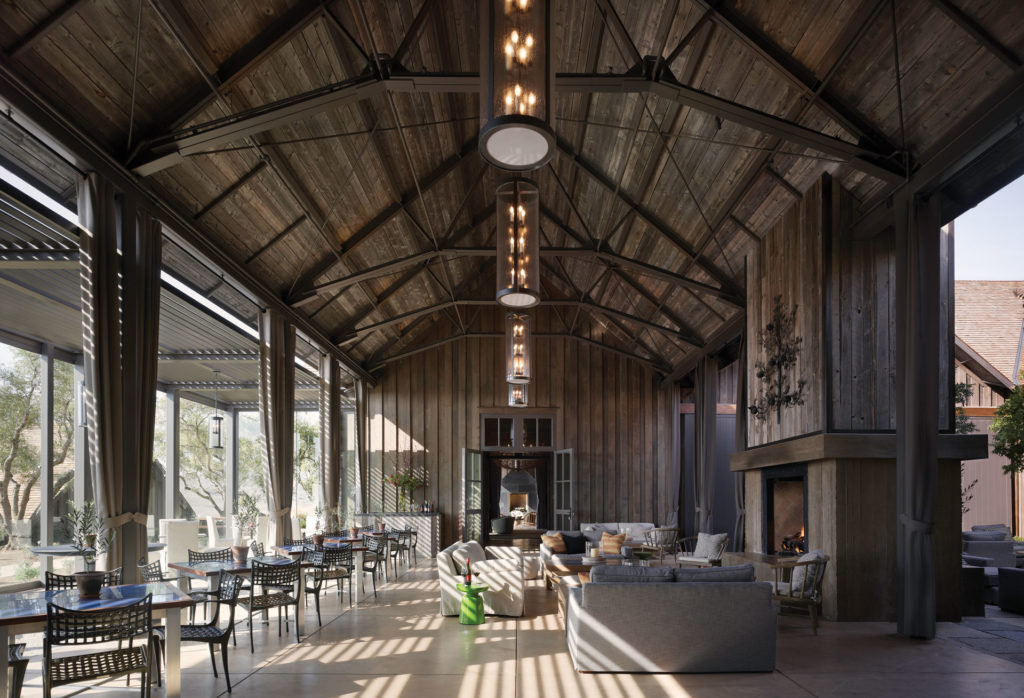Published as:
Orlando Diaz-Azcuy
Quiet Elegance


Orlando Diaz-Azcuy is celebrating 50 years in design. From his cutting-edge early work in San Francisco to his innovations at Gensler, the founding of his own firm, Orlando Diaz-Azcuy Design Associates (ODADA), and his furniture collections for Steelcase, McGuire, HBF, Boyd Lighting and Matsuoka, his oeuvre reflects a dedication to what he calls “intelligent pragmatism and quiet elegance.” Orlando sits down with Interiors magazine for a one-on-one about his incredible career in design.
You note the concepts of intelligent pragmatism and quiet elegance as hallmarks of your work. Elaborate on this and tell us how you maintain that balance in your designs.
As I have never had the intent to design for myself, I focus strongly on how things should work—I am a problem solver. But that does not impede me from creating a product or a solution that has an inspirational quality to it. I never like to call attention to myself; my business is not advertising or promoting, my business is to create comfort for the people, whether at their home, in their office or at a restaurant.
What has struck you most deeply as you have navigated through 50 years of design?
How fashionable and trendy we can be. We disregard what was done yesterday and concentrate on today. For over 55 years I have looked at the trends, from supergraphics in the ’60s to the inclusion of landscape (plants) in our designed environment, to chrome and glass of the ’70s, to the pattern-on-pattern and excess of the ’80s, to postmodern, to minimalism, to midcentury residential design. And then you add style and color and pattern, from traditional English and French fabrics to geometric to stripes to solids to beiges to no color to grays. Everything today is gray. Clients live in the moment, they only recognize the prevailing trend. You only have to watch HGTV to [realize] that every client asks for the same thing; open plan, wood floors, stainless steel appliances, granite countertops, fireplace—and all in shades of gray. People are only exposed to these trends through the same media, but what about the designers who have the obligation to educate their clients?
Collaboration is integral to any design endeavor. How does collaboration enhance your work and your colleagues’ work at ODADA?
To bring any idea to reality, it takes a village. You can be the inspirational force and share the voyage with as many others as it takes. Realize early on that you cannot do it all and probably are not capable of physically or intellectually doing it all. If you are a good leader you can guide it all to a successful end. The execution of a commission is not a competition. One gets better ideas and better results being more amicable, with gentle understanding and support of others’ ideas and contributions. I have never been as good by myself as others make me be.
How does your background in architecture inform your approach to space?
The fact that there have been interior designers with no training in architecture (Stanford White, etc.) and that there are many such talented interior designers today, it does not justify the absence of architectural training in the interior design profession. Both fields lack knowledge of the other; interior designers have very little training as to the knowledge of architectural definition and execution. Similarly, architects have no training on and understanding of how to give character and finish spaces. As I began as an architect with an interest in interiors, I have been able to conceive of solutions as a whole. I never have to dress a space, it comes to me as inspiration and as a complete solution. It is not the understanding of the proportions of a room, it is to have a clear understanding on how all the factors—structure, comfort, ventilation, light sources (natural and artificial) and sound—are a part of the conceptual architecture. A single element like color completely changes the emotions that exist within a space.
We are facing unprecedented challenges in the world. How can we design through adversity?
We rarely have the experience of how it was to design under and in the middle of a war, or a mutual catastrophe. There have always been times of stress and adversity to design through. We always find a way. Remember no matter how adverse a situation is, the act of design is a moment of inspiration.
What are you working on now? And what is next for you?
I have been preparing my retirement for a few years. I created a new name so the office can continue using my name. My personal business, Orlando Diaz-Azcuy Designs, created Orlando Diaz-Azcuy Design Associates, operating under ODADA. Therefore I passed the business to the senior members years ago. David Oldroyd is the management principal. I’ll continue occupying my private office and work as a consultant to ODADA and to other architecture firms. I’m consulting now on projects in East Hampton, Miami and California; adding new pieces to the Matsuoka line of furniture; introducing a line of lighting fixtures with Fuse Lighting; finishing my country home—a midcentury Eichler house; and working on a book for Rizzoli, my second book.
Some designers want to be trendy; therefore they follow the formula. My goal during these 50-something years has always been to break the pattern, to reflect the client, to try to solve things differently—not necessarily radically, not necessarily futuristic. It does not take much. Orlando Diaz-Azcuy, odada.net


